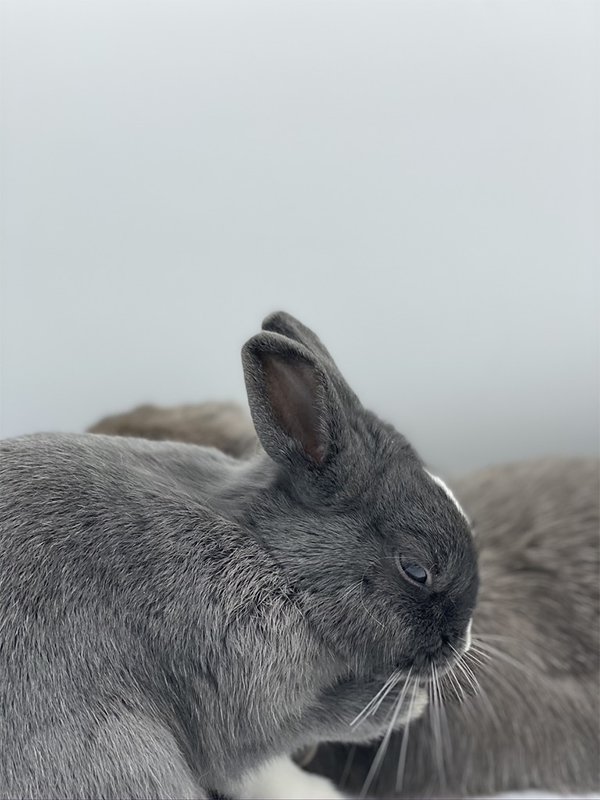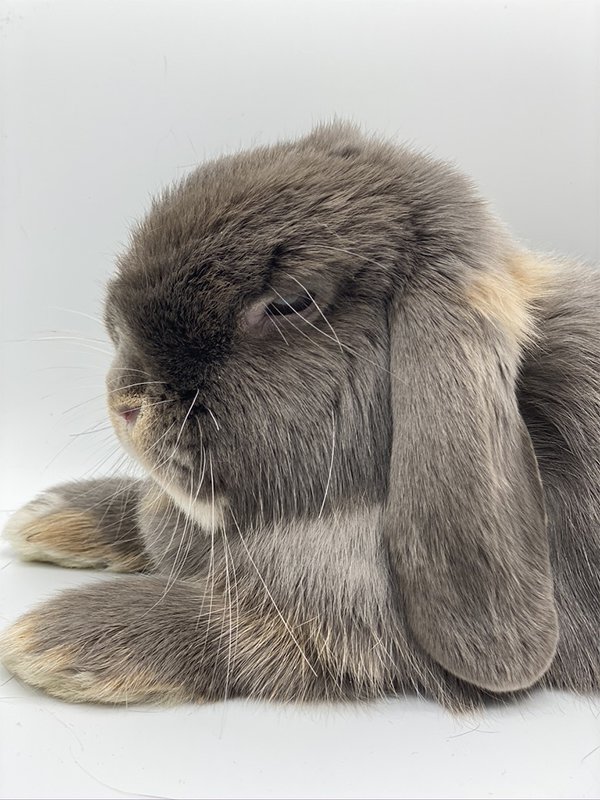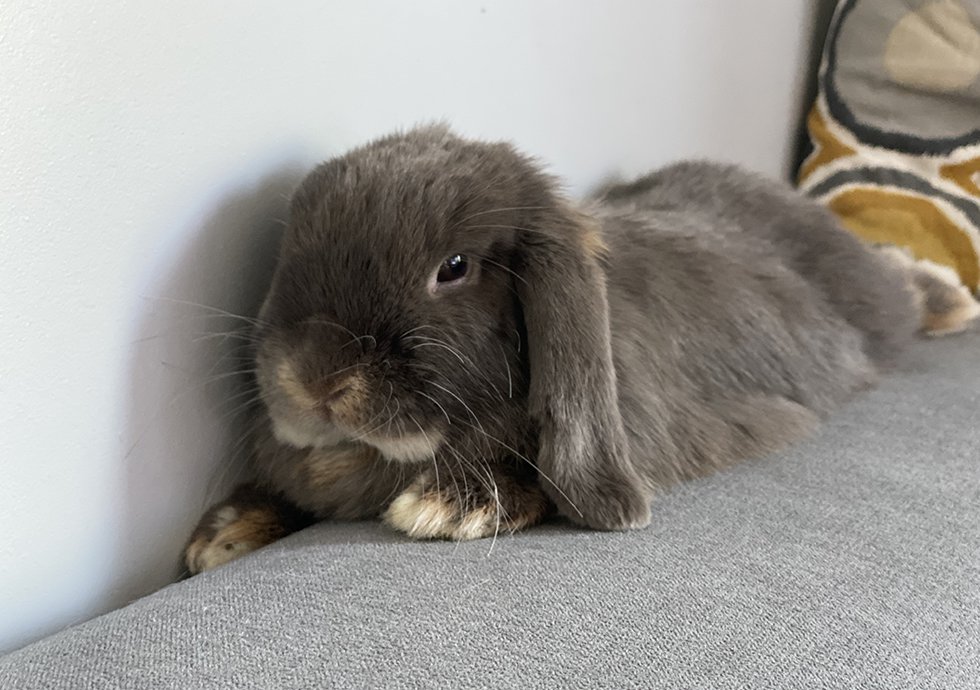DAILY LIFE
Daily care

Julie Lambert, Paris, France
October 11, 2020
The pet rabbit is an extremely clean animal. You will regularly see him groomed so that his fur is always perfect and you should never shower or wash him yourself. However, just because a rabbit can groom itself, you should not neglect it. It is important to care for and check your rabbit regularly.

Pinpin and Pipine posing as lovers.
Photographed by Vincent Ribet.
01 – Cage hygiene
Your rabbit’s cage is a place where your rabbit spends a lot of time, especially when it is young. It is important to keep the cage as clean as possible. Ideally, a thorough cleaning should be carried out every week. Accessories such as feeding bowls should also be well cleaned. To clean the cage and the utensils, I advise you to use edible white vinegar, which is inexpensive, harmless and very effective. If a stain is stubborn you can also buy a specialised rabbit product in pet shops or on the internet.
The litter box should also be cleaned once or twice a week and replaced with new litter.
02 – Weight monitoring
After the adoption of your rabbit, I recommend that you weigh it once a week to follow its development. A young rabbit should gain weight every week until it is about 6 months old. The best way to weigh it is to use a kitchen scale and to make your rabbit wait calmly with a small piece of fruit.
If you notice a significant weight loss in your rabbit, it may be due to illness and you should inform your veterinarian.

Pinpin doing his daily wash.
Photographed by Vincent Ribet.
03 – The length of the claws
The rabbit, even under its plush appearance and contrary to popular belief, is not an ideal gift for children. The rabbit is a fragile animal. The rabbit has a light skeleton with small bones but strong muscles. This morphology makes it prone to fractures very easily. I have experienced this myself with my rabbit. A jump too fast, an accidental fall, a bad grip can quickly have serious consequences. Moreover, even if the rabbit appreciates the contact, it can’t stand being carried. This trait can quickly become very frustrating for a child who can then get bored and abandon his animal.
Just like a dog, the rabbit represents a long-term commitment. Today rabbits live on average about ten years. Moreover, for some time now, veterinarians have noticed that with the progress of medicine and the improvement of the living conditions of these animals, more and more of them manage to live up to 15 years. It is important to take this information into account before deciding to adopt a rabbit.
04 – Moulting in rabbits
Rabbits, like many mammals, moult once or several times a year. This process is quite normal, but it can be useful for your rabbit to be brushed during these periods to help it evacuate this overflow of hair. A small rabbit or rodent brush will do the job perfectly.
05 – Signs of illness
Unfortunately, your rabbit can be affected by a disease. Rabbits, as prey in the wild, tend to hide that they are not well. You should therefore watch for any signs that a rabbit is sick.
To do this, the eyes and nose must be kept clear and not wet if the rabbit is healthy. You can also check if the ears are clean and free of crusts. You can also check the temperature of your rabbit with an infrared thermometer on the head below the hair. If the temperature is above 39.5°C (103,1°F) your rabbit has a fever and you should contact your vet.







0 Comments